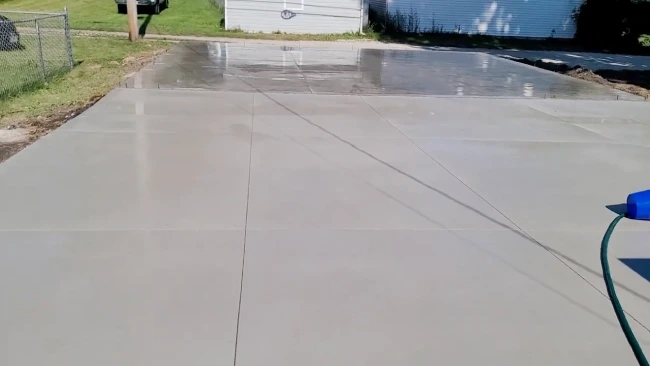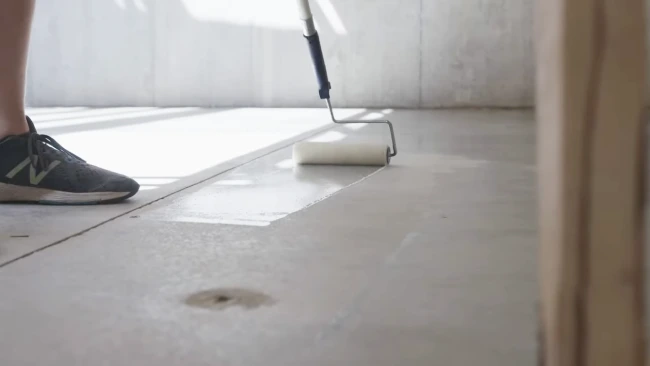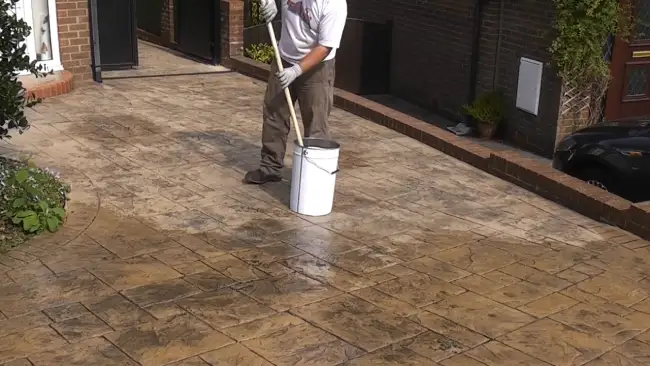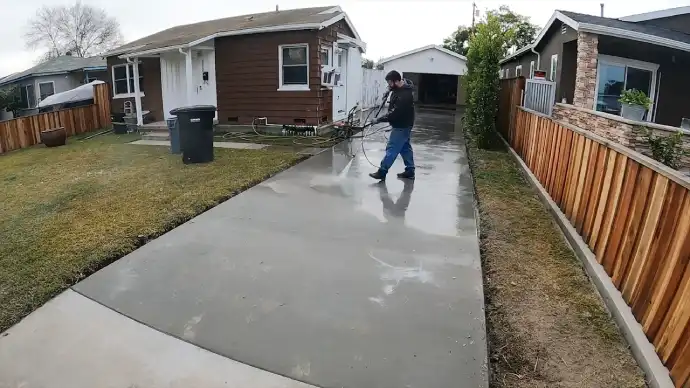Concrete has long been a go-to building material for its durability and strength. Whether it’s used for constructing tall buildings, long roads, or sturdy bridges, concrete remains a reliable choice. However, one common question regarding concrete installation is how long after sealing can one walk on it safely?
Answers vary depending on several factors such as temperature, humidity level, type of sealant used, and surface condition. For instance, water-based sealers typically dry completely within 24-48 hours, while solvent-based sealers can take up to 72 hours or more.
Discover the influencing factors behind curing time and make smarter decisions with this insightful article.
What Factors Affect Walking Time on Sealed Concrete?

The walking time on sealed concrete can be affected by several factors. These factors can impact the drying time of the sealer and can prolong the time it takes before it’s safe to walk on the surface.
Some of the factors that affect:
ONE: Weather Conditions
Temperature and humidity levels are important in determining when concrete surfaces should be accessed after sealing because they affect sealer drying time.
High temperatures can accelerate the drying process, causing the sealer to dry faster than usual, while low temperatures can slow down the process, extending the drying time. Also, high temperatures cause rapid evaporation, so the sealer hardens and dries faster because the moisture evaporates quickly.
On the other hand, slow evaporation happens with low temperatures, which means that the moisture in the sealer evaporates slowly, causing the sealer to take longer to dry.
Generally, drying times increase with low temperatures, making it important to be aware of weather conditions when sealing concrete surfaces.
Here are some weather-related guidelines to follow when determining if your sealed concrete is ready for foot traffic:
- Wait at least 24 hours before walking on newly sealed concrete.
- Avoid walking on freshly coated surfaces during hot and humid days.
- Do not apply sealers if rainfall or snowfall is anticipated within 24 hours.
TWO: Humidity Levels
Humidity levels play a crucial role in the drying time of sealers on concrete surfaces, and it’s essential to consider them when determining the appropriate time for safe foot traffic. When humidity is high, the air is saturated with moisture, making it difficult for the sealer to dry through evaporation.
This slows down or stops the drying process, increasing the drying time. On the other hand, low humidity speeds up the drying process, as there is less moisture in the air to hamper evaporation. Therefore, you should check the humidity levels before sealing concrete and plan for the appropriate drying time.
THREE: Concrete Surface Temperature
It’s not like you have anything better to do than wait for your freshly-sealed concrete driveway to dry, right? I mean, who doesn’t love standing in the scorching sun with nothing to do but stare at a patch of pavement?
One factor that affects sealer drying time is surface temperature. If the ambient temperature is below 50 degrees Fahrenheit or above 90 degrees Fahrenheit, you must adjust your expectations accordingly. Sealer drying times will be longer in colder temperatures and shorter in warmer ones.
The ideal range for sealing concrete is between 70 and 80 degrees Fahrenheit.
FOUR: Type Of Sealer Used
The type of sealer used is a critical factor that affects the drying time of concrete surfaces. Acrylic sealers, for instance, dry faster compared to polyurethane-based sealers. Each type of sealer needs different coats for optimal results.
For at least 36-48 hours, don’t walk on concrete sealed with acrylic sealer.
While some sealers require only a single coat, others may need multiple coats, extending the waiting period before walking on the surface. Using the appropriate sealer is essential to ensure that the concrete surface is protected from external factors and dries in a reasonable time.
Do you apply concrete sealer at any particular time of the day?

Like a well-choreographed dance, the timing of applying concrete sealer is critical, and many manufacturers suggest late afternoon or early evening as the optimal time. This is because the temperature is typically cooler during this time, and the sun is not as intense, allowing the sealer to dry slowly and evenly.
Applying concrete sealer during the day, when the sun is at its peak, can cause the sealer to dry too quickly, resulting in a patchy finish.
It’s important to note that the time of day you apply the sealer can also affect how long it takes to dry.
Applying the sealer during the hottest part of the day may dry too quickly, resulting in a brittle and less durable finish. On the other hand, if you apply the sealer too late in the evening, it may not have enough time to dry before the dew settles in, which can cause the sealer to become cloudy or hazy.
So when applying a concrete sealer, shoot for the late afternoon or early evening when it’s nice and chill. This way, the sealer can dry gradually and uniformly, giving you a super smooth and long-lasting finish.
Is too much sealer on concrete going to slow down the drying time?
The excessive application of sealer on concrete will inevitably slow down the drying process and significantly impact the final result. This is because when the sealer is applied too heavily, the air trapped beneath the surface cannot escape, forming unsightly bubbles.
In addition to this, environmental factors such as hot weather and direct sunlight can exacerbate bubbling, further delaying the drying process. It is important to note that excess sealer is not only unsightly but also poses a risk to the structural integrity of the concrete.
Therefore, it is recommended that only the correct amount of sealer should be used, ensuring an efficient and effective application that yields desirable results.
Does spraying or rolling concrete sealer affect the drying time?

The choice between spraying or rolling concrete sealer can significantly impact its drying time, leading to potentially uneven application and compromising surface protection. The appropriate painting method for the specific surface being treated should always be considered to ensure optimal results.
Generally, spraying is faster and more efficient for larger surfaces, while rolling is more cost-effective and better suited for smaller ones like garages. Spraying concrete sealer allows for more even distribution and a thicker coat, which can lead to faster drying times.
However, it can also result in overspray and waste and the potential for environmental hazards if not done correctly.
Rolling, on the other hand, may take longer to apply and require more effort. But it can provide a more controlled and precise application, resulting in a more even drying time and better protection for the surface.
Extend the Life Of Your Concrete With Proper Sealing
Sealing your concrete is a smart decision for its durability, but drying after can be complex. The drying time of sealed concrete is not a one-size-fits-all process and differs depending on several factors, such as the type of sealer used, weather conditions, and application method.
It’s crucial to respect the manufacturer’s guidelines for the ideal drying time, which usually ranges between 24 and 48 hours. In addition, the National Ready Mixed Concrete Association suggests that the best temperature range for this project is between 50 and 80 degrees Fahrenheit.
Quality sealers can also shorten the drying time, ensuring top-notch results for your project. With these tips, your sealing project can be completed safely without worrying about damaging your concrete or extended drying times.
